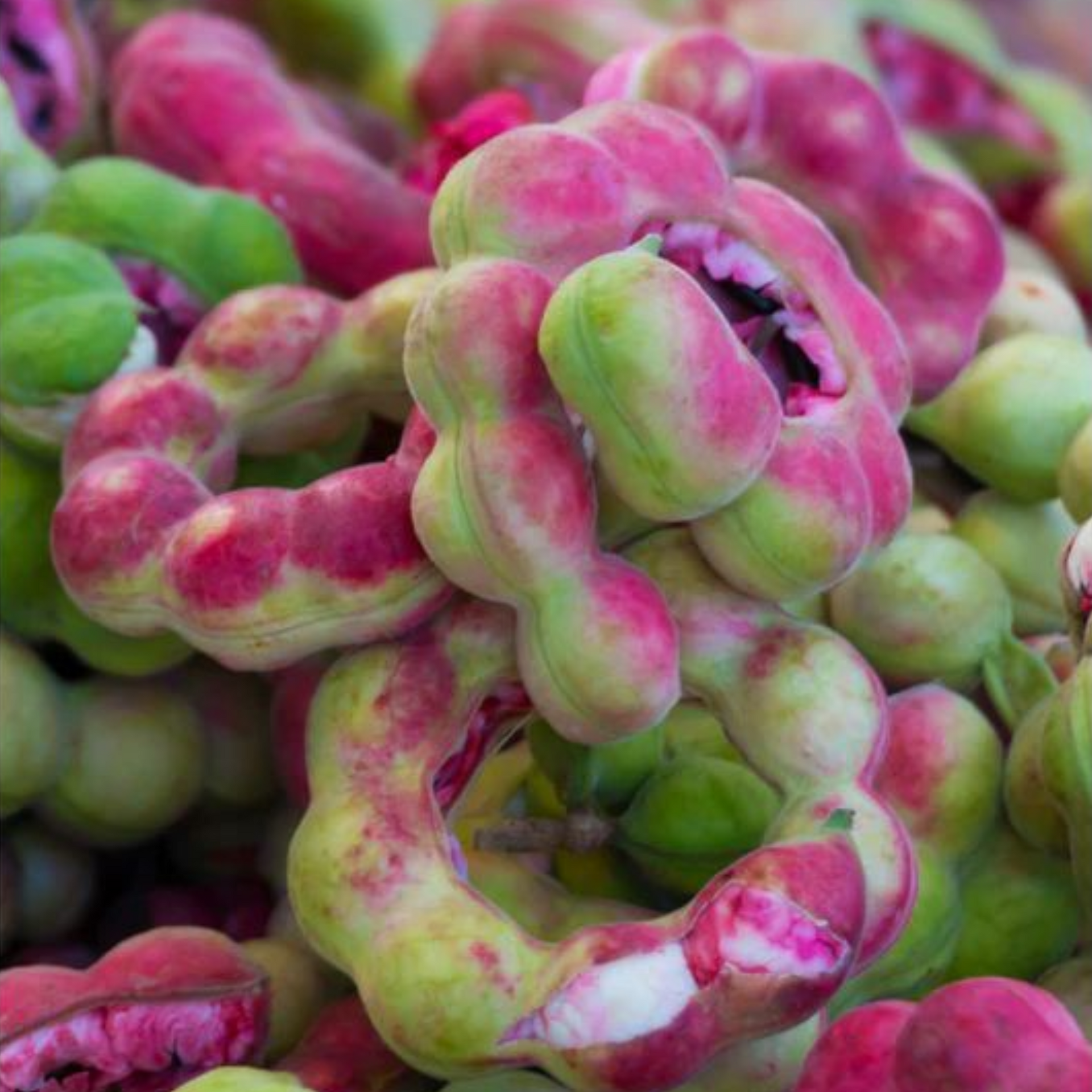



Green Paradise Manila Tamarind Camachile sweet fruit live plant
Guaranteed Safe Checkout
Green Paradise Offers A Selected Sweet In Taste And Big Fruit Size Species Of Manila Tamarind Plant
About Manila Tamarind Plant
The Manila tamarind, also known as camachile or camachile tree, is a tropical plant native to the Philippines. It belongs to the family Fabaceae and the genus Pithecellobium. The scientific name of the Manila tamarind is Pithecellobium dulce.
The Manila tamarind is a medium-sized tree that can grow up to 15-25 meters in height. It has a spreading crown and compound leaves that are pinnate, meaning they are composed of multiple leaflets. The leaflets are small and oval-shaped, with a glossy green color.
One of the distinguishing features of the Manila tamarind is its fruit, which is a pod-like structure. The fruit is elongated and curved, resembling a flat, twisted bean pod. When mature, the pod turns brown and woody. Inside the pod, there are several seeds surrounded by a sweet and tangy pulp. The pulp is edible and has a unique flavor, which is often described as a mix of sweet tamarind and mango.
The Manila tamarind is not only valued for its fruit but also for its timber. The wood of the tree is durable and used for various purposes, such as construction, furniture making, and fuelwood. Additionally, the tree has nitrogen-fixing properties, which means it can enrich the soil with nitrogen and improve its fertility.
In its native range, the Manila tamarind is commonly grown as an ornamental tree in parks, gardens, and along roadsides. It is also cultivated for its fruit, which is enjoyed fresh or used in various culinary preparations. The pulp of the fruit can be used in desserts, jams, beverages, and sauces.
The Manila tamarind is a hardy tree that thrives in tropical and subtropical climates. It prefers well-drained soils and can tolerate drought conditions once established. The tree is relatively low-maintenance and requires minimal care once it has established itself.
Overall, the Manila tamarind, or camachile, is a versatile tree valued for its unique fruit and timber. Its sweet and tangy pulp, along with its ornamental qualities, make it a popular choice in tropical regions, particularly in the Philippines.
How To Grow Manila Tamarind Camachile Plant





